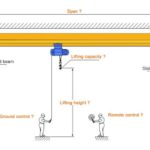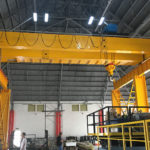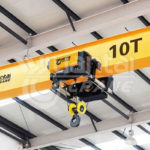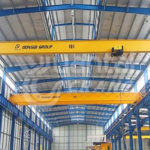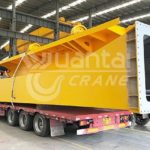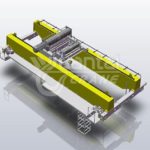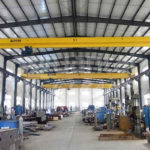What is a Jib for a Crane?
Imagine a crane arm with increased flexibility. A jib for a crane is essentially an extension arm that attaches to a main crane column or beam. It functions like a smaller crane arm mounted on a larger one, providing a wider range of motion and more precise control over loads. Jibs come in various configurations, offering increased lifting capacity, better reach, and improved accessibility in tight spaces.
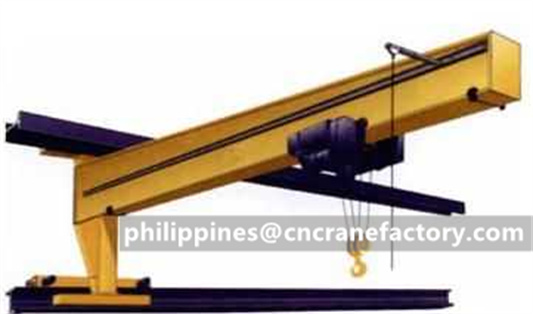
Types of Jibs for Cranes in the Philippines
Jib cranes come in various configurations to suit diverse lifting requirements. Here’s a breakdown of the most common types found in the Philippines:
- Pillar Jib Cranes: These are the most common type, featuring a vertical support column that anchors the horizontal jib arm. They offer excellent lifting capacity within a designated workspace and are ideal for workshops and assembly lines.
- Wall-Mounted Jib Cranes: These space-saving options are perfect for situations where floor space is limited. They’re securely mounted directly onto a wall, providing efficient lifting capabilities without sacrificing valuable floor real estate.
- Wall Travelling Jib Cranes: A Wall Travelling Jib Crane is a cost-effective crane which travels along the rail mounted on the wall or other supported structure on an elevated orbit of a multi-layer assembly shop, taking full advantage of the working space.
- Mobile Jib Cranes: These portable lifting solutions are mounted on a wheeled base, offering exceptional manoeuvrability. They’re perfect for applications where frequent relocation of the crane is necessary.
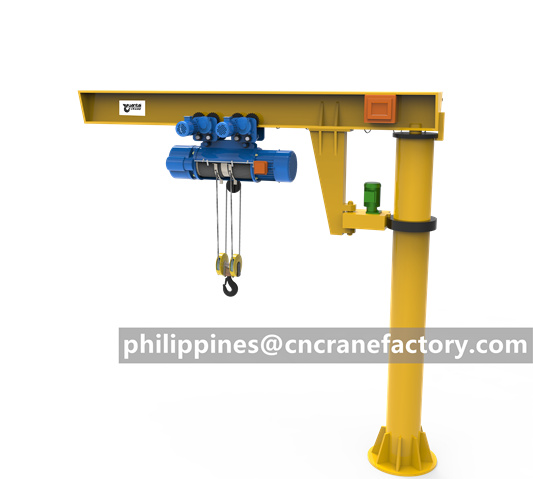
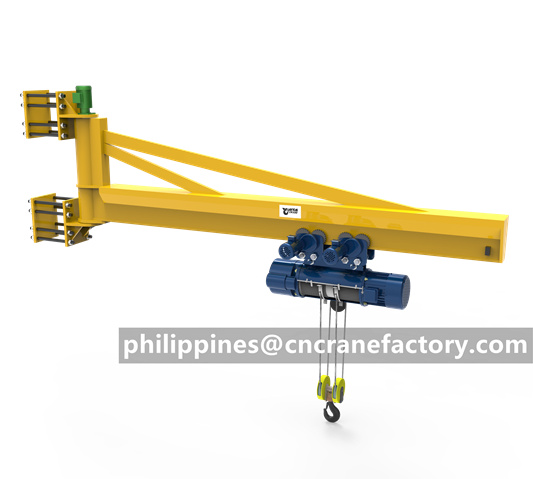
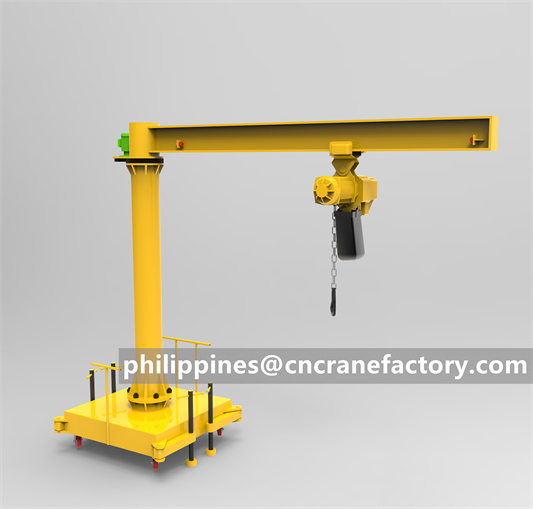
The Power of Jibs: Advantages of Using Jibs for Cranes in the Philippines
Jib cranes provide a multitude of benefits for Philippine businesses, enhancing productivity, safety, and overall operational efficiency. Here are some key advantages:
- Enhanced Efficiency: Jibs streamline material handling by offering a precise and controlled way to move loads within a designated area. This reduces wasted time and effort associated with manual lifting or using larger cranes for smaller tasks.
- Improved Ergonomics: By eliminating the need for manual lifting, jib cranes help prevent work-related injuries and promote a safer work environment for employees.
- Space Optimization: Jibs come in various configurations, including wall-mounted and freestanding options, allowing them to fit seamlessly into any workspace without sacrificing valuable floor real estate.
- Cost-Effectiveness: Compared to larger overhead cranes, jibs are a more affordable solution for targeted lifting needs. They offer a high return on investment by boosting productivity and reducing operational costs.
- Versatility: With various types available, jib cranes can be tailored to a wide range of applications. Whether it’s precise manoeuvring in a workshop or reaching specific areas in a warehouse, a jib crane can be configured to meet your specific needs.
Applications of Jib Cranes for Sale in the Philippines
Jib cranes are a versatile piece of lifting equipment that can be used in a variety of applications. Here are 6 applications of jib cranes, particularly relevant to the Philippines market:
- Manufacturing Facilities: Jib cranes are extensively used in manufacturing plants for tasks such as lifting and moving heavy machinery, components, and raw materials. They facilitate efficient assembly, disassembly, and maintenance operations. This is especially helpful in the Philippines where many manufacturing facilities are focused on smaller parts and electronics.
- Machine Shops: Jib cranes are used in machine shops for lifting and moving heavy machine tools, such as mills, lathes, and presses. They also can be used to position and load parts onto machines. The Philippines has a growing machine shop industry that can benefit from jib cranes to improve efficiency and safety.
- Shipyards: The Philippines is a major shipbuilding and repair hub. Jib cranes are extensively used in shipyards for lifting and moving heavy steel plates, pipes, and other materials during the construction and repair of ships.
- Warehouse: Jib cranes are used in warehouses for loading and unloading pallets, boxes, and other materials from trucks and trailers. They also can be used to move materials around the warehouse. This is important in the Philippines as many industries rely on efficient warehousing and distribution.
- Construction Sites: Jib cranes are used on construction sites for lifting and moving building materials, such as steel beams, concrete panels, and roofing materials. The Philippines has a booming construction industry, and jib cranes can help with safety and efficiency on these sites.
- Power Plants: The Philippines is investing in more power plants to meet the growing electricity demand. Jib cranes are used in power plants for lifting and moving heavy equipment, such as turbines, generators, and transformers during construction and maintenance.
Choosing the Perfect Jib Cranes for Your Needs in the Philippines
With a variety of jib cranes available in the Philippines, selecting the right one for your operation is crucial. Here are some key factors to consider:
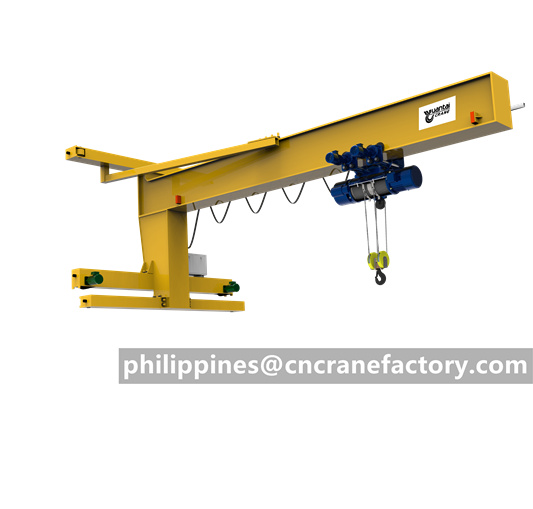
- Lifting Capacity: Determine the maximum weight you’ll need to lift regularly. Jib cranes come in various capacities, so choose one that exceeds your typical lifting needs for a safety margin.
- Reach: Consider the horizontal and vertical distance you need the jib to cover. Ensure the chosen jib arm extends far enough to reach all designated work areas.
- Duty Cycle: Evaluate how frequently you’ll be using the jib crane. Opt for a jib designed for your specific duty cycle, whether it’s light-duty for occasional use or heavy-duty for continuous operation.
- Space Constraints: Measure your available workspace and choose a jib crane configuration that fits comfortably without hindering existing operations.
- Power Source: Jib cranes can be operated manually, electrically, or pneumatically. Consider your power availability and choose a jib with a compatible power source.
- Safety First: Essential Considerations for Operating Jibs for Cranes in the Philippines
- Jib cranes offer numerous benefits, but prioritizing safety is paramount. Here are some crucial safety considerations when operating jib cranes in the Philippines:
- Comply with Regulations: Ensure your jib crane complies with all relevant safety regulations set forth by the Department of Labor and Employment (DOLE) in the Philippines.
- Proper Training: All personnel operating the jib crane must undergo thorough training to understand proper procedures, safety protocols, and load capacity limitations.
- Regular Inspections: Schedule regular inspections of your jib crane by qualified personnel to identify any potential issues and ensure safe operation
Jibs have become an essential tool in the Philippines’ diverse industries, from manufacturing plants to construction sites and warehouses. Mounted on cranes, jibs extend their reach, allowing for more precise and efficient lifting operations in tight spaces.
